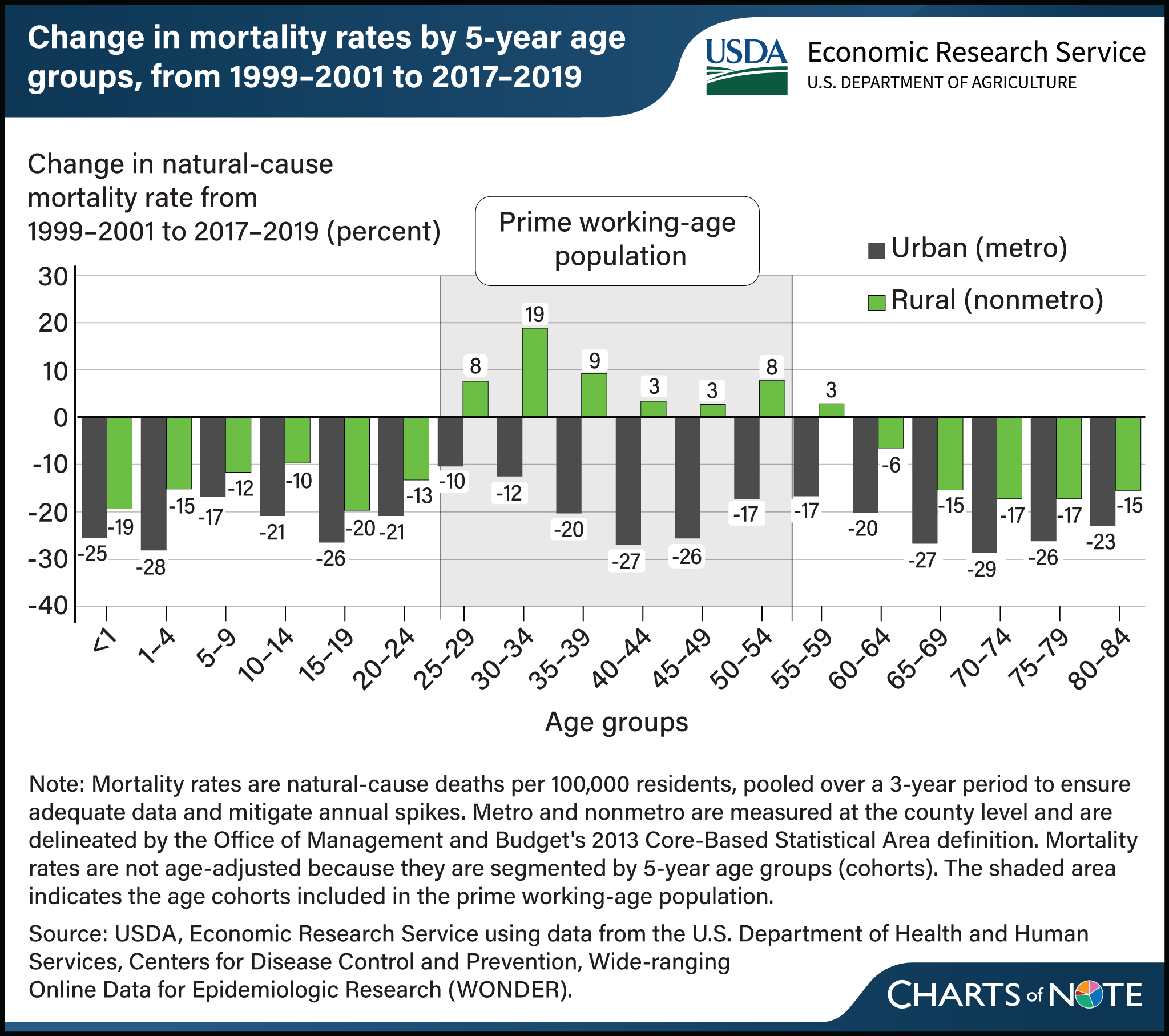Disease-related mortality gap is growing between U.S. rural and urban areas
- by Kelsey L. Thomas (Conley)
- 3/6/2024

Over the last two decades, disease-related (natural-cause) mortality rates have widened between rural and urban areas, especially for the prime working-age population (aged 25–54). Researchers with USDA, Economic Research Service (ERS) compared natural-cause mortality in rural and urban areas between two 3-year periods, 1999–2001 and 2017–2019. They found the gap between rural and urban natural-cause mortality rates widened between the two time periods. Natural-cause mortality rates decreased across all age groups in urban areas. In rural areas, mortality rates decreased for most age groups (although not as much as for the same groups in urban areas) but increased for the prime working-age population. The rural group with the largest increase (19 percent) in natural-cause mortality rates was 30- to 34-year-olds. Increased mortality rates for people who are of prime working age are an indicator of worsening population health, which could have negative implications for rural families, communities, employment, and the economy. This chart appears in the ERS report The Nature of the Rural-Urban Mortality Gap, published in March 2024.

